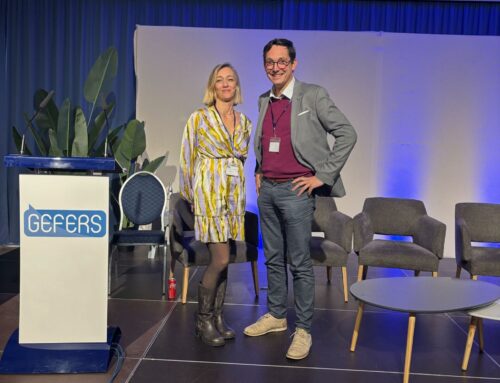According to our expert, a distinction must be made between active and inactive nurses to determine the shortage:
“The number of licensed nurses per capita is very high. But the number of active nurses is very low because the majority of nurses work 5 to 10 years and then change career, professional orientation. Belgium has one of the worst nurse-to-patient ratios in Europe.”
Added to this is another factor: the decrease in enrollment in nursing schools. Indeed, since the lengthening of the number of years of study (from 3 to 4 years), a decrease of 20% in the number of students has been noted. It is likely that the number of enrolments will decrease further with the COVID-19 crisis!
What are their reasons for changing their lives?
The effect of COVID-19
The nursing shortage, already present before the COVID-19 crisis, was amplified with it. Two reasons for this:
- The workload for a patient with the virus is substantial and requires more staff.
- The emotional burden on caregivers is also greater, which can have an impact on the rate of absenteeism
The “duty standard” indicates the number of patients that a nurse must take care of. Currently, it is 3 patients per day. This is double the estimate made by Arnaud Bruyneel in one of his latest studies. According to him, nurses should take care of a maximum of
- 1.5 patients in the morning and afternoon
- 2 patients at night
These proportions ensure an optimal quality of care with a 100% bed occupancy rate.
Nurse burn-out
This factor has unfortunately also increased during the crisis. Arnaud Bruyneel explains:
“I looked into nurse burnout during the first wave of COVID. According to a report by the Federal Centre for Expertise in Health Care (KCE), the prevalence of burnout risk before the crisis was around 36%. In April 2020, Pierre Smith (UCL doctoral student) and I conducted a study of 4,500 French-speaking nurses. We found that this prevalence had increased to 70%. One could say that this figure has doubled because of the pandemic.”
Note that these percentages only indicate a risk, that the sample is not mixed, and that in Belgium this prevalence is higher in the South than in the North of the country. The shortage of nurses is also greater there.
The vicious circle
This leads to a vicious circle: the nursing staff is confronted with an excessive workload. This prevents them from providing the care they want. They go home frustrated or exhausted. After a few years at this pace, some leave the profession early or go on medical leave. This results in fewer nurses at the bedside, increasing (again) the workload of the remaining staff.
Investing in the nursing profession
Arnaud Bruyneel believes that the best way out of this vicious circle “is to invest in the nursing profession. This will pay off in the medium and long term.” According to the expert, a good approach to combat the nursing shortage would be “to retain nurses who are already here.”
“If we focus only on the number of students, it’s like giving the patient blood to treat a hemorrhage without stopping the bleeding. Today in our country, we need to do both: attract new nurses and keep active staff from leaving the profession.”
Together and thanks to our 10 years of experience in the hospital sector, Opal Solutions creates tools that do exactly that:
First of all, thanks to Careboard, our real-time and forecasted nursing workload measurement tool. We noticed that there was no solution for managers to have a real view on the care load faced by the field teams. The goal of Opal Solutions was to provide, through a centralized platform, objective data with the number of patients, the number of beds … and subjective data with the feeling of the field staff on their workload in care.
This way, decisions are made on the basis of real information, you can help your staff by seeing the state of your hospital and your staff on a daily basis.
Secondly, thanks to Interneo, our nursing placement management tool. You reduce administrative tasks with low added value by 90%. Thus, the time you save, you devote to the patient. Moreover, with the attractiveness module in our platform, you have access to a recruitment pool of resources already validated and evaluated by the field. Tasks such as internship requests, schedule creation, and communication are distributed between schools, hospitals and students, saving you even more time.
Our third solution is Formeo, a training process management tool for nurses. This platform not only allows staff to register for training in 1 click, but also to centralize all information related to the training process in 1 place. Unit managers also have access to all the skills of their unit members. Managers can more easily manage their training expenses. They know what skills their hospital and staff need at the right time.



